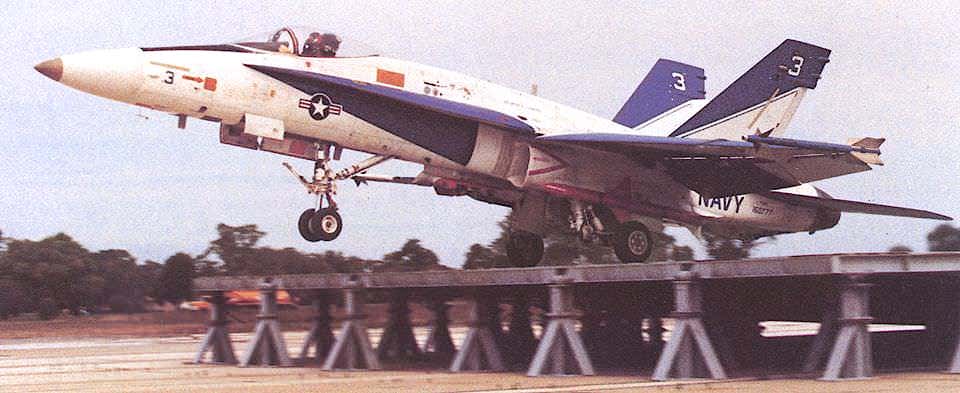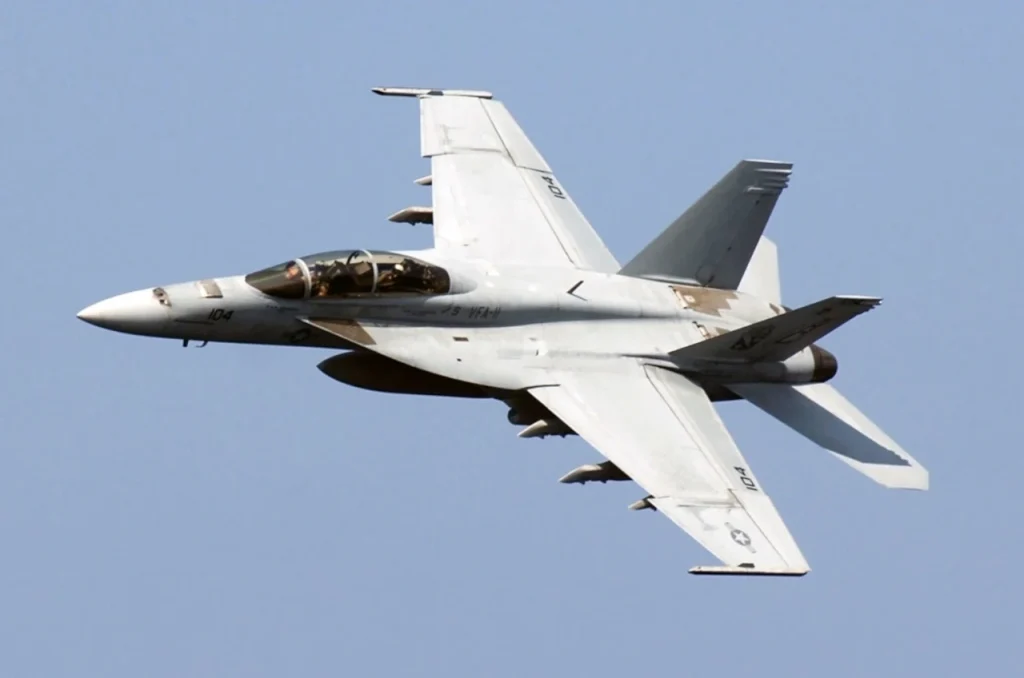The Boeing F/A-18 Hornet naval fighter-bomber is always in the shadows when it comes to sales as Lockheed Martin aggressively pushes its F-16 and the more modern F-35. However, F-18 has proven itself as an effective and versatile combat aircraft for many decades.
F-18’s design is derived from the Northrop YF-17, which lost a contest to be the lead fighter of the United States Air Force, finally won by the F-16. But after a redesign, McDonnell Douglas (and Northrop, now a part of Northrop Grumman) managed to get the F-18 selected by the US Navy. The company (now Boeing) configured and built it as a fighter intended to operate from the large aircraft carriers of the US Navy.

Naval and air force fighter-bomber
Notwithstanding its naval label, it has never ceased to be an effective conventional landing and takeoff combat aircraft in many air forces without losing its naval “attributes”, like the hook on the nose gear to be catapulted and the tail hook to hook during landings on the braking cables of the decks of an aircraft carrier.
F-18 began as an underdog to F-14 Tomcat in US naval aviation, but its greater versatility and lower operating costs ultimately prevailed. The US Navy financed the development of a newer version, called the F/A-18E/F Super Hornet, which continues to be the greatest asset of this air-naval force due to the delays in the arrival of the new F-35C.
F-18 – sold but undersold
The adaptable F/A-18 (the F stands for Fighter and the A for Attack) completed its first flight on November 18, 1978, and it entered service with US Marine Corps aircraft in 1983 as well as the US Navy on July 1, 1984. Although falling short of F-16 sales figures, the F-18 production debuted with three major orders from Australia, Canada and Spain.
The Spanish Air Force acquired a total of 72 brand-new aircraft, known locally as the EF-18 or C.15 CE.15, and later added 24 more used aircraft from the US Navy and Marine Corps’ excess at the end of the 1990s.
Canada’s 40-year-old fleet of CF-118s, local designation of the F/A-18 Hornet, operated by the Air Force, may be relieved from service only after completing 50 years. In 2008, Canada purchased 98 single-seat variants and 40 dual-seat variants, a total of 138. In 2018, Canada ordered 18 second-hand flyable F/A-18s and seven non-flyable aircraft for spares from Australia. Canada intends to purchase F-35As or F/A-18E/F Super Hornet block III in the future.
The Royal Australian Air Force (RAAF) operated McDonnell Douglas F/A-18 Hornet combat aircraft between 1984 and 2021. In 1981, the Australian Government ordered 75 F/A-18s in the A and B versions to replace the Dassault Mirage III fighters.
Finland, Kuwait, Malaysia and Switzerland progressively added to these orders, bringing the total manufactured units to 1,480. Currently, of these operators, both Australia and the US Navy have replaced them with the F/A-18E/F, a fighter that, although very similar on the outside, is a different and larger model, which made its first flight on November 29 1995. Kuwait currently operates 27 legacy F-18 Hornets, plus six F-18D trainers, and according to reports, Boeing sent 28 F/A-18E&F Super Hornets Block 3 to the US Navy in September of last year in anticipation of being delivered to Kuwait. The Super Hornets are also competing with Rafale M for the Indian Navy carrier-borne fighter requirement.
The versions of the F-18
The Hornet name refers to the F-18’s first versions, A/B and C/D, where A and C are single-seaters, and B and D are two-seaters, respectively. Super Hornet is the appropriate moniker for the F-18’s next evolution.

The F/A-18, in its A/B version, has been highly modified over the years. The dimensions of the model are 17.07 meters in length, 11.43 in width and a height of 4.7 meters. Two General Electric F404 GE-400 engines power the single-seater with an afterburner, which gives it a maximum speed of Mach 1.8 and a maximum range of just over 780 kilometres. With refuelling, the range can be increased to everything the pilot can withstand, with its operating ceiling being 15,240 meters.
Initially, the Hornet cost about $40 million per unit, and the last published cost was 51 million for each unit of Super Hornet delivered to the US Navy.
F-18 Armament
The above price does not include its weapons, starting with the North American medium/long-range missiles AIM-120 AMRAAM and the short-range AIM-9 Sidewinder. It has an internal 20mm M61A1 Vulcan cannon. In the air-to-surface role, Hornets can use a diverse arsenal of missiles (air-to-ground, anti-radar, anti-ship) and other intelligent weapons. The aircraft is cleared for delivery of B-61 tactical atomic bombs. It can carry 7,700 kilograms of weapons or fuel in its supplementary tanks on its nine outer anchor pylons. The initial APG-73 radar has been replaced by the AN/APG-79 active electronically scanned array (AESA).

During their long operational career, Hornets have been used, mainly by the United States, in multiple operations such as those in Libya, the Gulf War, the former Yugoslavia, the aerial siege and the seizure of Iraq, Afghanistan, etc. The active military operational career is followed by the evolved F/A-18E/F Super Hornet and its defense suppression and electronic warfare variant, the EA-18G Growler.
